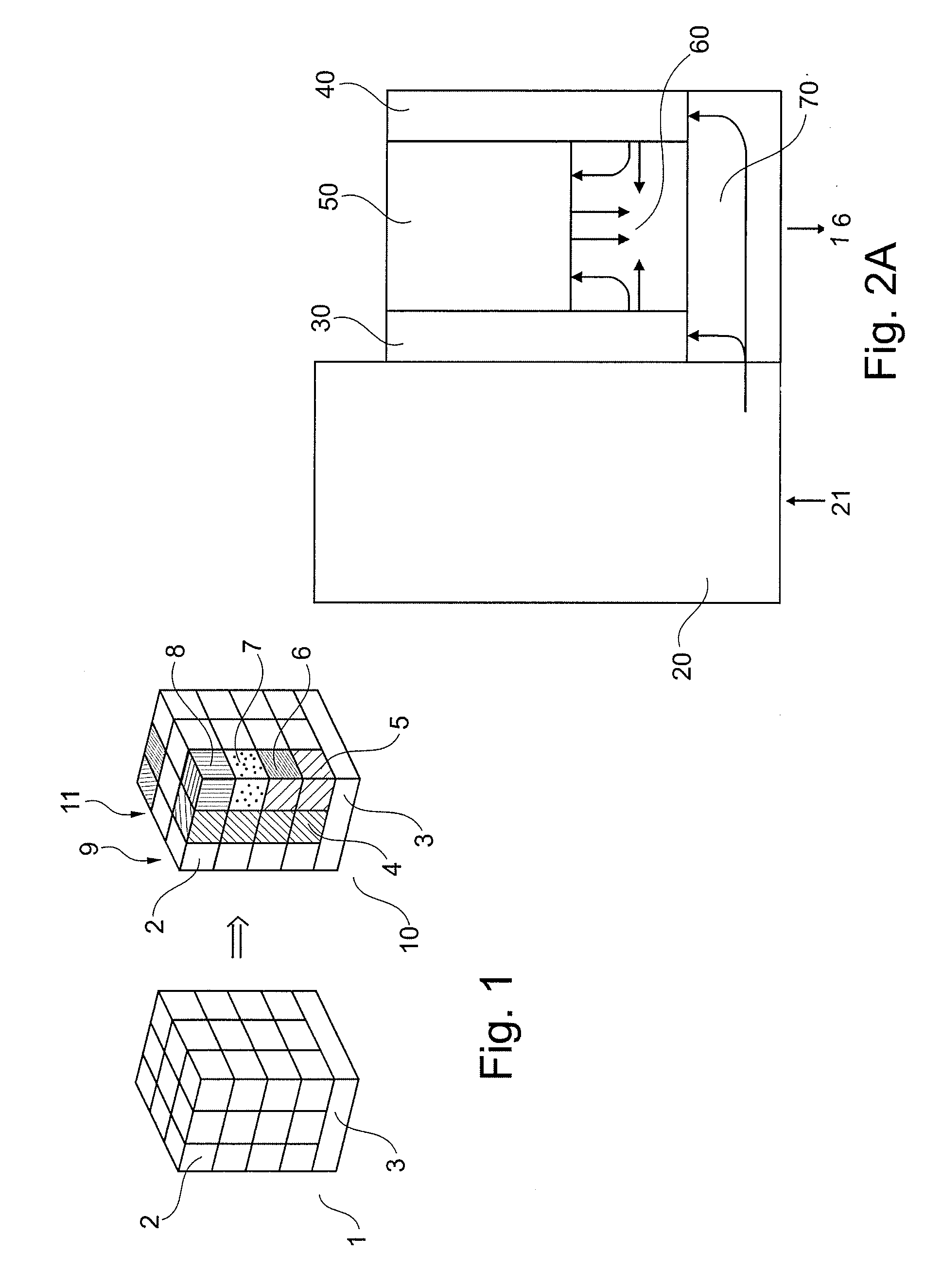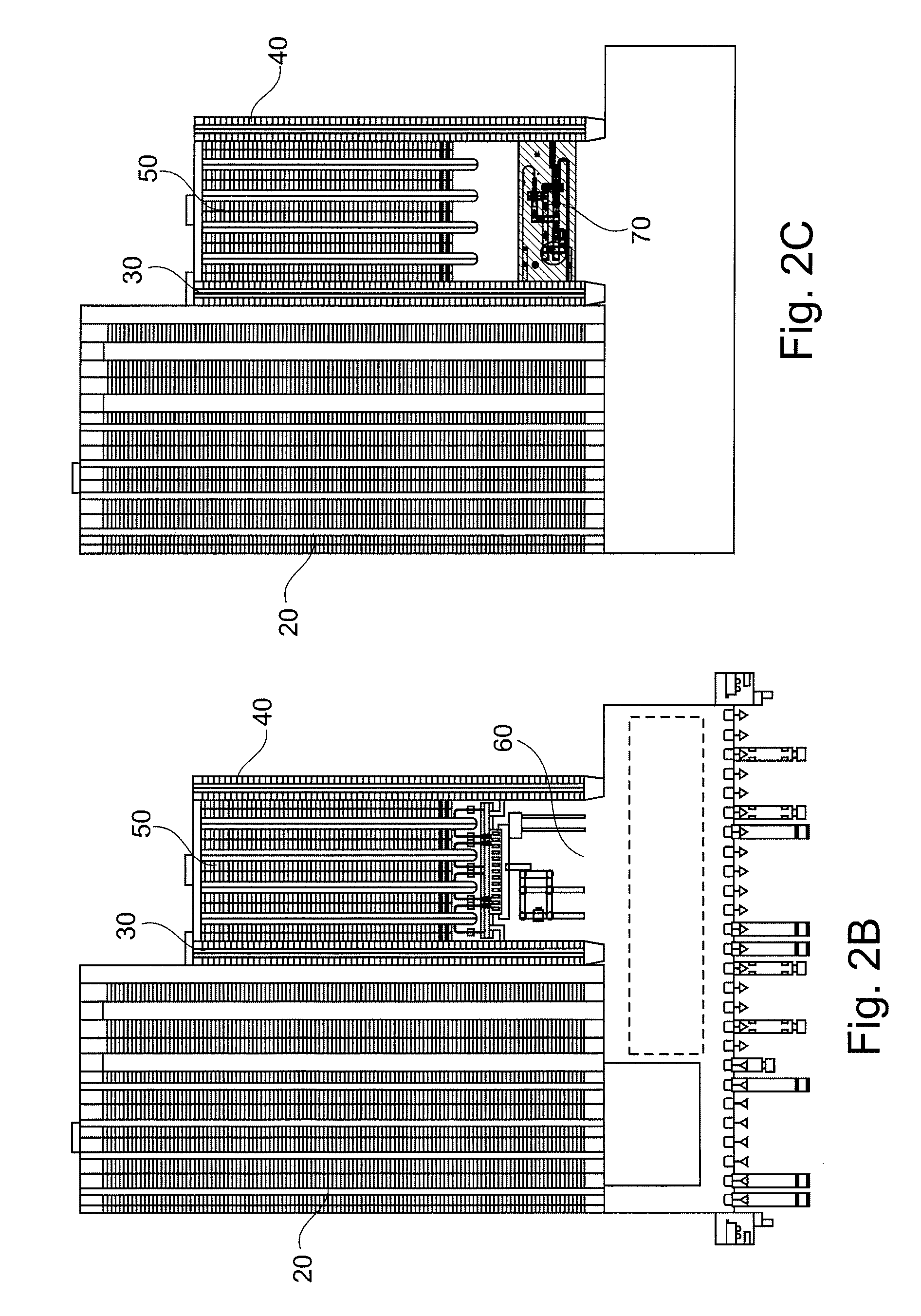System and method for order picking
a system and method technology, applied in the field of installation and a method for ordering picking, can solve the problems of insufficient automated order picking of returnable beverage crates, high personnel and organizational burden, and large inbound unit for delivery to retail stores, so as to avoid errors, eliminate labelling, and reduce space requirements
- Summary
- Abstract
- Description
- Claims
- Application Information
AI Technical Summary
Benefits of technology
Problems solved by technology
Method used
Image
Examples
Embodiment Construction
[0051]FIG. 1 shows a perspective view of two pallet stacks comprising an inbound unit 1 and an outbound unit 10, with the unbound unit 1 being on a pallet 3 (e.g., a standardised euro pallet), containing only single-type SKUs 2, and thus representing an inbound unit into a central warehouse, for example, of a retail chain. The SKU 2, which in turn can comprise smaller packaging units, is the smallest packaging unit, which is treated in the central warehouse in line with the system for order picking.
[0052]Although retail stores (e.g., the branches of the retail grocery store chain and the like) are supplied also in larger packaging units that may differ from or are identical with the inbound unit 1 (see outbound unit 10 of FIG. 1), these outbound units from the central warehouse can be assembled with different items because the demand in retail stores for a particular type of item in retail stores is not as large as the corresponding packaging unit and there is not enough storage spa...
PUM
 Login to View More
Login to View More Abstract
Description
Claims
Application Information
 Login to View More
Login to View More - R&D
- Intellectual Property
- Life Sciences
- Materials
- Tech Scout
- Unparalleled Data Quality
- Higher Quality Content
- 60% Fewer Hallucinations
Browse by: Latest US Patents, China's latest patents, Technical Efficacy Thesaurus, Application Domain, Technology Topic, Popular Technical Reports.
© 2025 PatSnap. All rights reserved.Legal|Privacy policy|Modern Slavery Act Transparency Statement|Sitemap|About US| Contact US: help@patsnap.com



